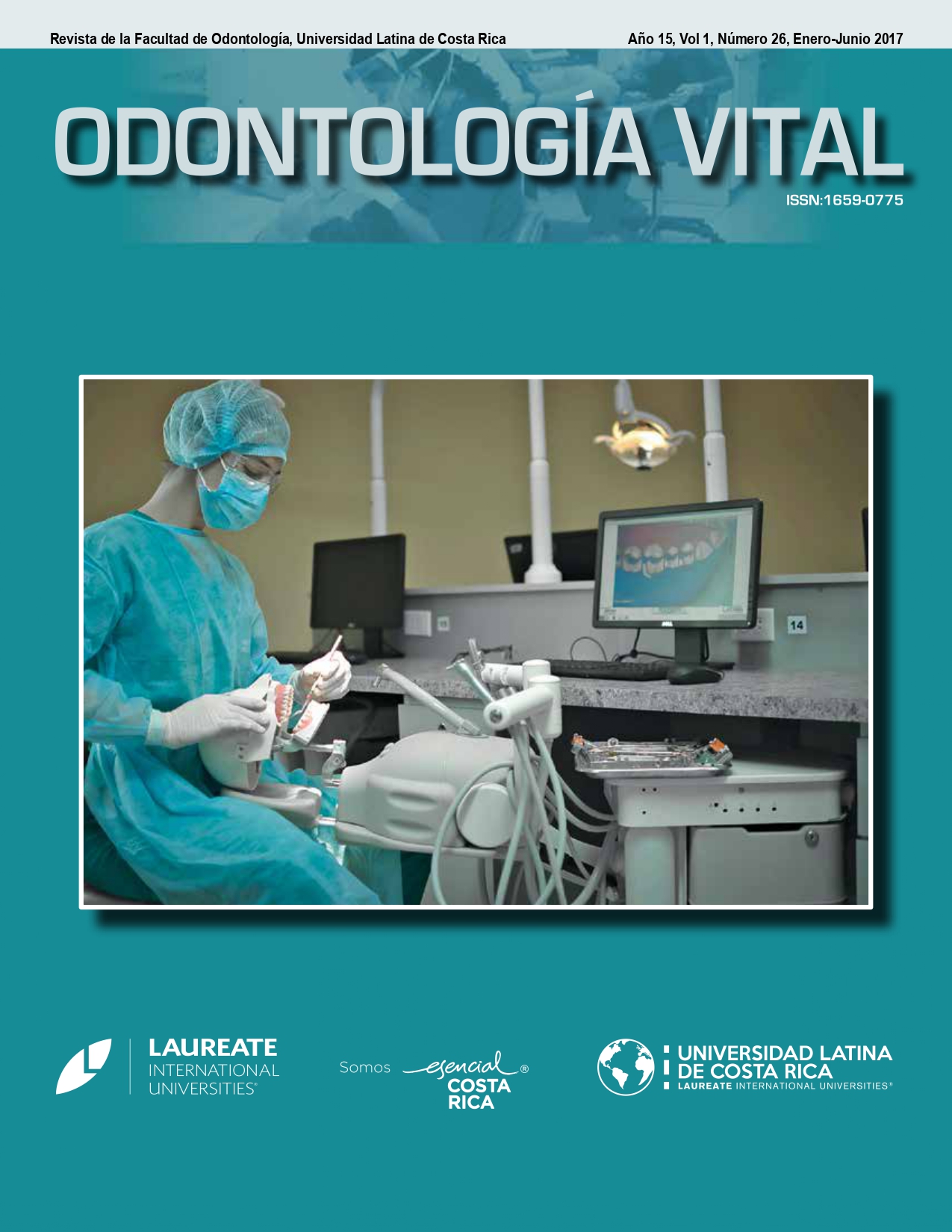Symmetrical first premolars extractions in patients with severe crowding: Case report
DOI:
https://doi.org/10.59334/ROV.v1i26.223Keywords:
Biprotrution, symmetric extraction, hyperdivergent, dolichofacial, severe crowdingAbstract
In cases of severe crowding, many times the location of dental structures impede treatment, so asymmetrical extractions is suggested to allow a less prolonged treatment with satisfactory results. This article presents a case of dental extractions biprotrution treated with 4 premolars reported, a case of 20 years and 6 months old female patient, skeletal Class II, hyperdivergent, with bilateral dolichofacial pattern, molar Class III bilateral, canine Class I bilateral, upper midline coincident and lower midline 4mm left deviated, is reported and no habits. The goals of treatment are proposed: a symmetric extractions of first premolars upper and lower, correct the maxillary and mandibular crowding, achieve midlines, and obtain bilateral Class I molar and maintain bilateral Class I canine. It was possible to correct severe crowding with a suitable form of arch.
Downloads
References
Álvarez, C., Hernández, S., Parés, F., (2006), Frecuencia de los componentes de la maloclusión clase II esquelética en dentición mixta. Revista Medigraphic. Vol LXIII. N° 6. Noviembre-Diciembre.http://www.medigraphic.com/pdfs/adm/od-2006/od066c.pdf
Bravo, LA., ( 1994), Soft tissue facial profile changes after orthodontic treatment with four premolars extracted. Angle Orthod; 64(1): 31-42.
Burstone, CJ., ( 1967). Lip posture and its significance in treatment planning. Am J Orthod; 53: 262-284. https://doi.org/10.1016/0002-9416(67)90022-X
Kasai, K., (1998), Soft tissue adaptability to hard tissues in facial profiles. Am J Orthod Dentofacial Orthop; 113: 674-684. https://doi.org/10.1016/S0889-5406(98)70228-8
Proffit, W., Fields, HW., Sarver, DM., (2008),.Ortodoncia contemporánea. 4a ed. EUA. Elsevier Mosby.
Rodríguez, E., White, L.. (2008). Ortodoncia contemporánea, diagnóstico y tratamiento. Editorial Amolca. Segun-da Edición. Colombia.
Rodríguez, Y., Casasa, R., Natera, A.. (2007).101 Tips en Ortodoncia y sus secretos. Editorial Amolca.
Rubio, GG., Lara, P.. (2014). Corrección no quirúrgica del perfil de una maloclusión clase II. Revista Mexicana de Ortodoncia; 2(4): 268-72. https://doi.org/10.1016/S2395-9215(16)30044-7
Solem, RC., Marasco R., Gutiérrez L., Nielsen, I., Kim, S., Nelson, G.. (2013). Three-dimensional soft-tissue and hard-tissue changes in the treatment of bimaxillary protrusion. Am J Orthod Dentofacial Orthop; 144: 218-228. https://doi.org/10.1016/j.ajodo.2013.03.018
Tulloch, JF., Medland, W., Tuncay, OC., (1990). Methods used to evaluate growth modification in class II malocclu-sion. Am J Othod Dentofacial Orthop; 98: 340-347. https://doi.org/10.1016/S0889-5406(05)81491-X
Downloads
Published
Issue
Section
License
Copyright (c) 2017 Ruth Nassi Ribak

This work is licensed under a Creative Commons Attribution 4.0 International License.
Authors who publish with Odontología Vital agree to the following terms:
- Authors retain the copyright and grant Universidad Latina de Costa Rica the right of first publication, with the work simultaneously licensed under a Creative Commons Attribution 4.0 International license (CC BY 4.0) that allows others to share the work with an acknowledgement of the work's authorship and initial publication in this journal.
- Authors are able to enter into separate, additional contractual arrangements for the non-exclusive distribution of the Odontología Vital's published version of the work (e.g., post it to an institutional repository or publish it in a book), with an acknowledgement of its initial publication.
- Authors are permitted and encouraged to post their work online (e.g., in institutional repositories or on their website) prior to and during the submission process, as it can lead to productive exchanges, as well as earlier and greater citation of published work.







